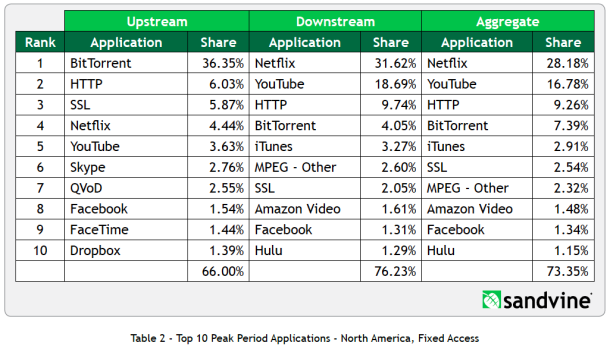Image via cybrain/Shutterstock
A half-yearly report on global internet traffic reveals that users are consuming more and more video content online and two services in particular are leading the fray, accounting for more than 50pc of all downstream traffic in North America.
The Global Internet Phenomena report by Sandvine monitors fixed, mobile and converged data networks around the world and identifies the trends in global internet traffic. The regular report is published twice a year and the results for H2 2013 finds that video content is far and away the dominant driver of internet traffic worldwide.
In North America, Netflix leads the fray, accounting for 31.6pc of downstream traffic during peak periods, followed by YouTube at 18.6pc. Combined, these two video content services account for more than half of overall downstream traffic on fixed networks, streaks ahead of any other contender.

Source: Sandvine Global Internet Phenomena report
It took four years for Netflix to reach 20pc of data traffic in the US, but the brand’s growth is escalating and, less than two years since its launch in Europe, it has already reached this milestone on certain fixed networks in the UK and Ireland.
Video is also a key driver of traffic in the Asia-Pacific region, accounting for 50pc of peak downstream traffic. Average monthly mobile usage is this region has now reached more than 1GB – more than double the monthly average in North America.
Instagram, which added video to its service just in time for the latter half of the year, is now one of the top-ranked apps on mobile networks around the world.
In Africa, video accounts for less than 6pc of traffic on mobile networks. However, this is expected to grow at a faster rate than any other region previously.
Meanwhile, readily available streaming services have made a huge dent in traffic, coming from P2P filesharing. Five years ago, this accounted for more than 31pc of total daily traffic in North America but, these days it has dropped to less than 10pc.
Online video image by cybrain via Shutterstock